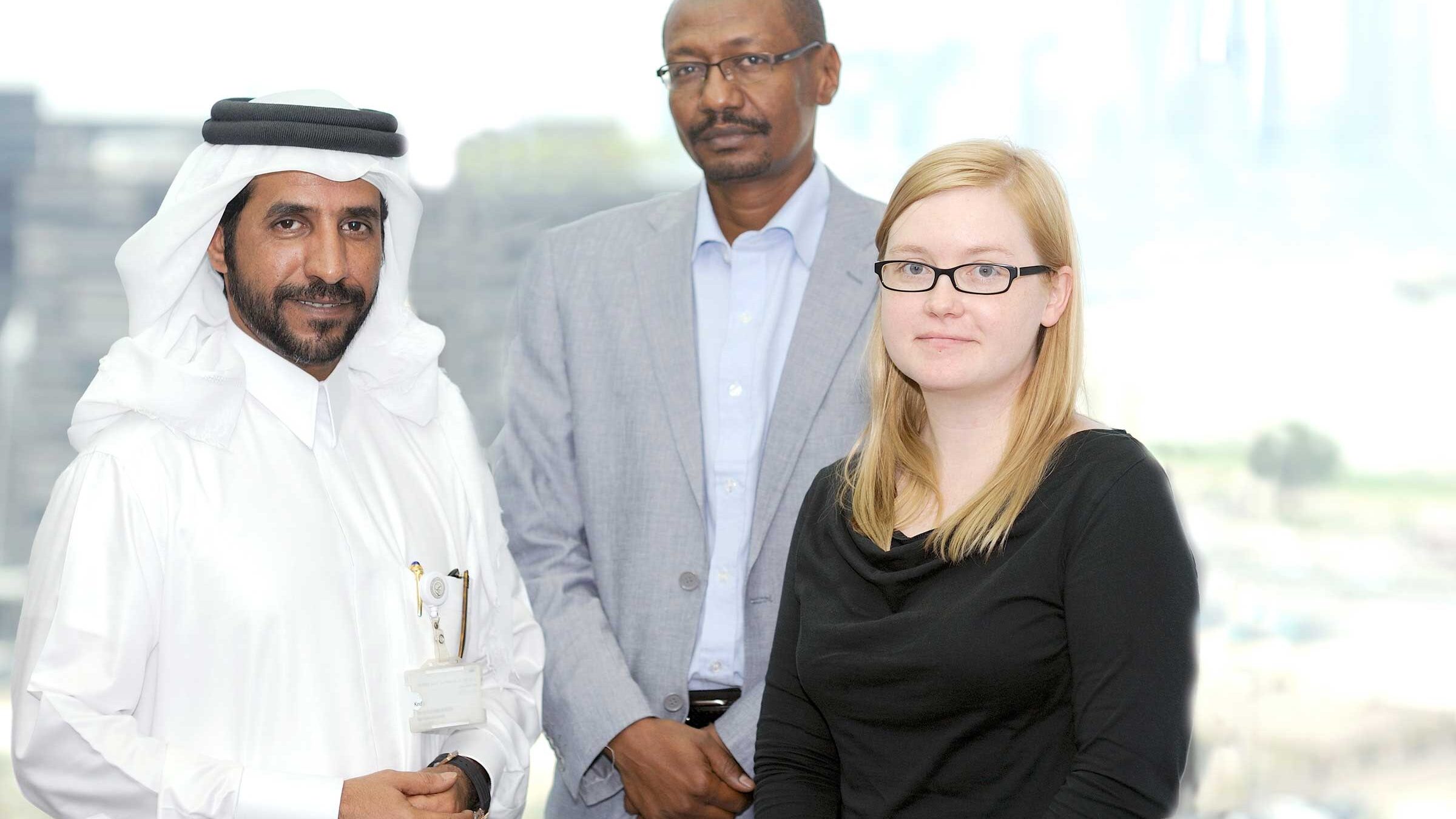- Academics
- Admissions & Enrollment Services
- Research
- Academic & Creative Spaces
- Strategic Partnerships
- Our Impact
- Student Affairs
- Campus & Community
Admissions for Fall 2025 now open

Virginia Commonwealth University in Qatars project titled Visualizing Qatars Past, which proposes to build up a visual record of Qatars archaeological and heritage sites and develop new methods of recording and analysis based on the use of UAV (unmanned aerial vehicle) photography, has been awarded a $400,000 National Priorities Research Program (NPRP) grant by Qatar National Research Fund (QNRF).
The project is a collaboration between VCUQatar, the University of Wales Trinity Saint David, and the Qatar Museums Authority.
Qatar is currently undertaking an unprecedented level of archaeological research and excavation, helping to provide a greater understanding of its diverse and long heritage. Working in partnership with world leading academic institutions, Qatar is developing an understanding of its heritage to its people and its relation to the rest of the world. The visual recording of its heritage helps to provide a detailed and publicly accessible printed and digital record, multimedia applications can be used to present and to create accessibility to a sometimes less than accessible past, helping to further the development of an educational out-reach tool. The use of photographic and video recording of Qatar’s heritage from the air allows for both plan like presentations of a site in a way that is not normally viewable to people, as well as enabling the editing of video fly-through presentation, enabling a better visualization of a site and its landscape to a great audience. The use of this method of recording also brings access to areas of towns, buildings, landscapes and not normally easily accessible. The act of recording the excavation of archaeological sites allows for preservation of the processes involved in the exploration and development of understanding Qatar’s built heritage as well as providing an educational tool to others in the processes and time taken to unearth and discover Qatar’s past, helping to create a comprehensive archive for current and future generations.


The project will be led by Director of Research in Islamic Archaeology at the University of Wales Trinity Saint David, Dr. Andrew Petersen and Assistant Professor / Media Technology Coordinator at VCUQatar Diane Derr with other members of the team including Daniel Jones from Trinity Saint David, Faisal Abdulla Al Naimi, head of Antiquities at Qatar Museums Authority and Murtada Kodi also from QMA.
This will be one of the first times that this technology has been used to carry out archaeological survey and photography and will make use of the latest version of UAV technology i.e the Draganfly X8. Usually archaeologists have to rely on photography towers (cumbersome, potentially dangerous and limited altitude and flexibility), kites (reliant on wind, difficult to control, vulnerable limited payload). The Draganfly is a compact vehicle with 8 rotor blades controlled via GPS which is different to conventional radio controlled aerial vehicles. In addition to conventional photography the Draganfly will make use of infra-red and other forms of data capture.
The project will take place over a three year period with fieldwork trials carried out during the winter and spring of each year starting October 2011. The first year of the project will involve field trials of the remote aerial vehicle on the University of Wales archaeological excavations in Northern Qatar. Particular sites to be surveyed include Ruwaydha and Rubayqa. During year two use of the aerial vehicle will expand to include a variety sites currently under excavation by the University of Copenhagen (Zubara, Fuwairit and Ferayha), University of Birmingham Projects (surveys and excavations in northern Qatar), and the Deutches Archaeological Institute (surveys and excavations in southern Qatar). Year three will see the incorporation of the aerial vehicle into archeological projects throughout the country and will be routinely deployed by the QMA.
“This is an amazing opportunity,” said Dr. Petersen. “The grant will be transformational for the way we carry put archaeological fieldwork. There have been many different techniques for taking overhead views of archaeological sites- this is the first method that is both accurate and reliable and that can be employed at virtually any time.”
This grant puts Qatar at the forefront of archaeological imaging. A number of institutions in Europe and North America have bought this technology for use in environmental monitoring but only a few have considered their applications in archaeology and this is certainly their first deployment in the Middle East. “Instead of relying on satellite images or expensive aerial photography we will be able to search for new sites, investigate known sites and monitor national historic buildings whenever it is required,” he added.
“The collaboration between VCUQatar and the University of Wales Trinity Saint David means that we will be able to pool our expertise with VCUQatar’s knowledge of imaging, photography and design complementing our own experience in archaeology and heritage. Also VCUQatar will be able to provide specialist resources within Qatar which would be otherwise unavailable to field based archaeology projects,” said Dr. Petersen. “Contributing to the preservation of Qatar’s heritage will be an incredibly rewarding endeavor,” concluded Ms Derr.
Tagged As

